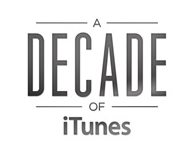[I neglected to link to this post I wrote over at The Mac Observer, but as I watched my son synching his new iPod touch over WiFi this Christmas, these thoughts came back to me; I figured they should be here as well. – Editor.]
Apple released iOS 5.0.1 yesterday, mainly to address battery issues and add multi-touch gestures to the original iPad. The most remarkable feature of the update, though, had nothing to do with what it contained and everything to do with how it was delivered: the update was the first to be delivered and installed over the air (OTA), with no tethering to a computer (indeed, no computer at all) required.
This is not new to Android users, but it was a welcome event for iOS users. Since I heard about the update on Twitter before my devices notified me, I didn’t get to see how the update might have announced itself (it at all.) Once I knew about it, though, it was a simple matter to go to Settings: General: Software Update, where my iPhone 4 — and, later, iPad 1 — dutifully notified me there was an update available. Both my devices were almost fully charged, so I ignored the warning about plugging into a power source, and the updates downloaded and installed without a hitch.
Another new update method got considerably less attention yesterday. Apple released version 7.6 of its Airport software. Just for fun, I fired up the new iOS Airport Utility on my iPad, and sure enough, the app informed me of the available update and allowed me to install it without having to go to my Mac at all.
I suppose the Airport update shouldn’t have seemed all that amazing — after all, it’s a remote update whether it’s done from the iPad or a Mac. But this is the one that gave me the bigger “living in the future” feeling. One that reinforced the notion that my iPhone and iPad are not just satellite device for my Mac. They are peers, and in more and more instances, provide a better experience than those “real” computers.
 I joined a panel of pretty smart pundits on the latest edition of Chuck Joiner’s MacJury podcast. We started out with a look at the “battle” between so-called Open and Closed ecosystems, including of course Android and iOS (and some thoughts on why Android is ahead of iOS in market share), and then delved into TV and movie content distribution and other tangents. As usual, it was a lively discussion that I think shed some light on some of the issues at play. Guests Peter Cohen of The Loop and iMore and Weldon Dodd of Rewind Technology were lots of fun to banter with.
I joined a panel of pretty smart pundits on the latest edition of Chuck Joiner’s MacJury podcast. We started out with a look at the “battle” between so-called Open and Closed ecosystems, including of course Android and iOS (and some thoughts on why Android is ahead of iOS in market share), and then delved into TV and movie content distribution and other tangents. As usual, it was a lively discussion that I think shed some light on some of the issues at play. Guests Peter Cohen of The Loop and iMore and Weldon Dodd of Rewind Technology were lots of fun to banter with.
 You may have already heard, but Apple released some sort of new phone last week and Chuck Joiner was kind enough to ask me to talk about it on his excellent MacJury podcast.
You may have already heard, but Apple released some sort of new phone last week and Chuck Joiner was kind enough to ask me to talk about it on his excellent MacJury podcast.